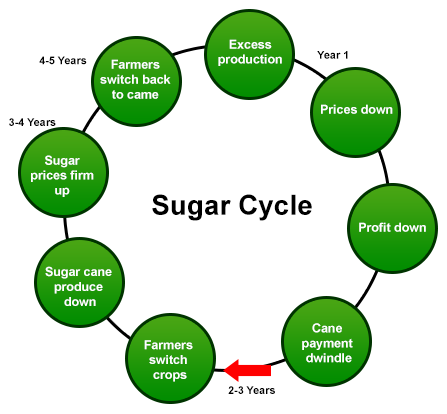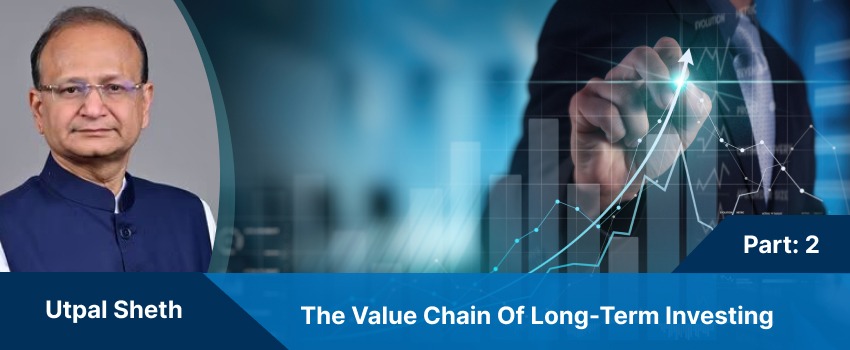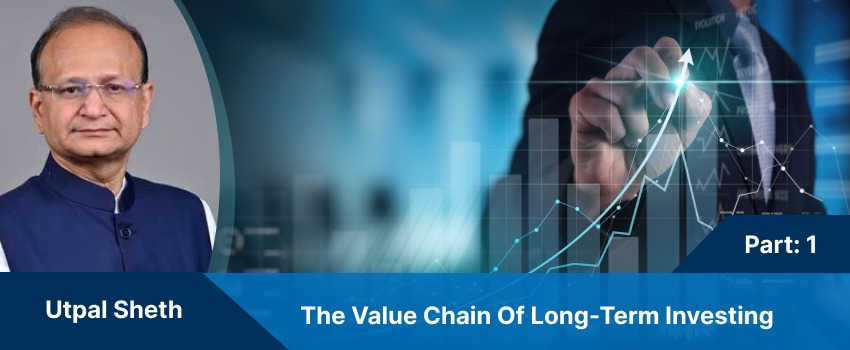Have you ever been on a roller coaster ride in an amusement park? Travelling on these rides is so terrifying sometimes: at one moment you are up and upside down, and the next, you’re flying downwards so fast that you can hear your every heartbeat! If you have not been there, then don’t worry, we will take you through the roller coasters of stock markets: Cyclicals, in which there is no end to ups and downs.
What are Cyclicals?
‘Cyclicals’, according to Peter Lynch are the companies whose revenues and profits are in tandem with the state of the economy with their performance being tied to the business cycle.
They can be classified under two categories:
Rate sensitive sectors – These are the businesses which are primarily affected by the interest rates prevailing in the economy and thus any contraction or expansion in economy consequently affects them. Auto companies, banks and capital goods fall under this category.
Commodity based sectors – Earnings and cash flow of these businesses are dependent on the demand –supply of their products/raw materials leading to the final price of the product. During expansion, there is increase in demand, resulting in business expansion; whereas in the times of recession, the demand gets subdued, leading to business contraction. Metals & Mining, sugar and cement companies follow these patterns.
Cyclicals, thus, suffer huge losses during recessions, often finding it hard to survive till the next boom. But, when things do start to change for the better, dramatic swings from losses to profits can often surpass expectations. It is to be noted that rise and fall in profit of cyclicals usually depends on various regulative and administrative policies.
Why invest in a cyclical company?
“It takes remarkable patience to hold on to a stock in a company that excites you, but which everybody else seems to ignore.” – Warren Buffett
Investing in cyclicals is akin to travelling on a sine wave. One needs to invest in stocks at the trough and get out of investment at the peak of sine wave. Each cycle has a downside, during which prices dip and an upside, during which prices rise to their highest. The depth of the trough and the height of the peak, the duration of downside and the duration of upside may vary for different cycles, but the overall downside, peak and upside are more or less same for most cycles. This downside and upside pattern repeats itself many times for a majority of the cyclical stocks. One has to take advantage of this repetition and buy on the ‘upside’. The approach is quite simple; however, successful cyclical investing requires careful timing.
How to invest in Cyclical?
Before selecting a cyclical stock, it makes sense to pick an industry that is due for a revival. Declining interest rates and growing consumer spending signals towards the economic expansion. Then, in that industry, choose companies that look especially attractive.
Consider an example: In the present economic scenario, where economy is growing at a mere 5% growth, automobile industry is facing a slump in their sales due to higher interest rates and lesser demand. Lower interest rates provide better financing, and thus, stimulate consumer demand. So, one can look for the signals affecting the industry and invest in a company which is able to perform better than its peers.
Following points should be considered while investing in Cyclicals:
- Keep a close watch on inventories and the supply-demand relationship. Watch for new entrants into the market, which is usually a dangerous development.
- Anticipate a shrinking P/E multiple over the time as business recovers and investors begin to look ahead to the end of the cycle, when peak earnings are achieved.
- Prices at a discount to the book value offer an encouraging sign.
- The lower the percentage of institutional ownership, the better the company is.
- Both, insiders and the company buying back its own shares, are positive signs.
- Are the earnings sporadic or consistent?
- Check whether the company has a comfortable debt to equity ratio of around 1:1.
Have you found your cyclical?
We will now discuss the sugar industry, which is famous for its cyclical nature. Any thoughts, why?
The reason for cyclicity in sugar industry is the demand & supply mismatch. When demand is more than the supply, it results in a profit for the industry whereas when supply is in excess of demand, sugar industry faces tough times.
Sugar Cycle
The uptrend is characterised by a decline in sugarcane cultivation. This is due to increased cane arrears as payments are delayed by manufacturers led by losses in the sugar business. Increase in cane arrears leads to a decline in sugarcane harvesting, and thus, lower sugarcane availability. Lower sugarcane crushing followed by lower sugar production results in higher sugar price and increased profitability for manufacturers. Due to increased profitability, manufacturers make prompt payments to farmers, who again increase sugarcane production. This increment leads to a surplus of sugar in markets, affecting prices and profitability of manufacturers adversely. Sugarcane arrears are increased again, prompting farmers to grow less sugarcane and triggering an uptrend.
This could be easily explained with the help of the following illustrations:

When is the best time to sell a Cyclical?
The best time to sell is towards the end of the cycle. To identify the trend; look for signals like an increase in interest rates and a decrease in consumer spending. Excluding the end of the cycle, the best time to sell cyclical companies is, when:
- It has been hit by a regulation issue.
- It is not able to generate positive cash flows.
- Costs have started to rise.
- Existing plants are operating at full capacity, and the company has begun to spend money to increase its capacity.
- Commodity prices are falling and competiting businesses are increasing.
- Inventories building up with company being unable to get rid of them signalling lower prices and lower profits down the road.
Conclusion:
If you can’t convince yourself ‘When I’m down 25 per cent, I’m a buyer’ and banish forever the fatal thought ‘When I’m down 25 per cent, I’m a seller,’ then you’ll never make a decent profit in stocks.
These are the words of Peter Lynch which are very apt for Cyclicals. Cyclicals may be low-risk and high-gain or high-risk and low-gain, depending on how adept one is at anticipating business cycles. Thus, if you have the courage to go for a risky investment, then try your hand at Cyclicals!
If you liked what you read and would like to put it in to practice Register at MoneyWorks4me.com. You will get amazing FREE features that will enable you to invest in Stocks and Mutual Funds the right way.
Need help on Investing? And more….Puchho Befikar
Kyunki yeh paise ka mamala hai
Start Chat | Request a Callback | Call 020 6725 8333 | WhatsApp 8055769463











excellent !!!!!!!!!!!!!!!
expecting more n more. pls keep it up.